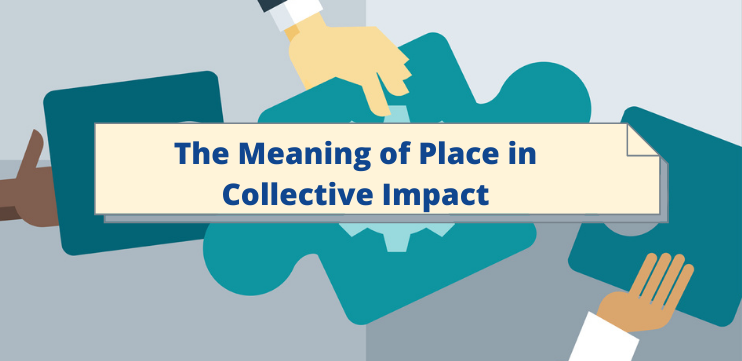The Meaning of Place in Collective Impact
by dias

A generational shift has happened in the U.S. Now, the qualities of the place where we live and work and play – the qualities of the place we call our hometown – are as important if not more than the job itself. This is a significant departure from the Baby Boom era, where the career ladder trumped place and an acronym like IBM stood for a corporate giant as much as a common corporate practice: “I’ve Been Moved.” The young talent generations are working to live, rather than living to work.
So, that has big implications on a number of fronts. For communities looking to attract and keep the talent generation, it means examining their strengths as a “Place” and, if they’re found wanting, building a strong Place Identity. We would argue, too, in connection with Collective Impact, that Place Identity is a prerequisite for successful collaboration. A shared Place Identity binds people together and is a crucial source of motivation to aspire to something better, to reach for lasting solutions to difficult problems.

At the heart of creating a great place is entering a process to examine these kinds of issues:
- What is the competitive advantage of your place? What is your place getting right? For instance, when visitors come, what tops the list of things to see or do or experience? Study your history, your geography, your economic engines, your amenities, your culture, your institutions and your landmarks. Building off the strengths you discover equips you to meet the challenges of things that aren’t right, and is the first step to creating a strong Place Identity.
- When people love the place they live there are tangible links to economic vitality and growth. The Knight Foundation’s “Knight Soul of the Community Project” found that relationship in cities and towns across the country. Do residents of your place love where they are? That fundamental bond helps groups navigate how they go forward, even if initially there are very different views on how best to do that.
- If your Place Identity is weak or if residents are more dissatisfied than in love, it’s easier to be random in community pursuits or “sell out” – that is to pursue development or amenities or other ideas that have worked in other places, but ultimately don’t ring true to your community’s Place Identity. Misalignment with your core identity can doom even the most promising looking initiative.
Knowing your Place Identity, and being able to bring that identity to life in a way people can relate to and take pride in, is the critical first step in creating the common ground necessary for effective community problem-solving and collective impact. It is as important to the healthy development of places as it is to the people who live in them.
A generational shift has happened in the U.S. Now, the qualities of the place where we live and work and play – the qualities of the place we call our hometown – are as important if not more than the job itself. This is a significant departure from the Baby Boom era, where the career…
